
[ad_1]
The 800-volt DC fast-charging {that a} handful of electrical automobiles available on the market are able to at this level is broadly seen as a know-how benefit.
However not a single Tesla presently presents it. Nor does the Tesla Supercharger community within the U.S.
The odd factor about charging at 800 volts or increased, versus the 400 volts most EVs fast-charge at, is that once you’re plugged in on the charger, you won’t even understand it’s taking place. Most automobiles or chargers that allow it don’t mark the event—exterior of permitting some very quick charging in perfect situations.
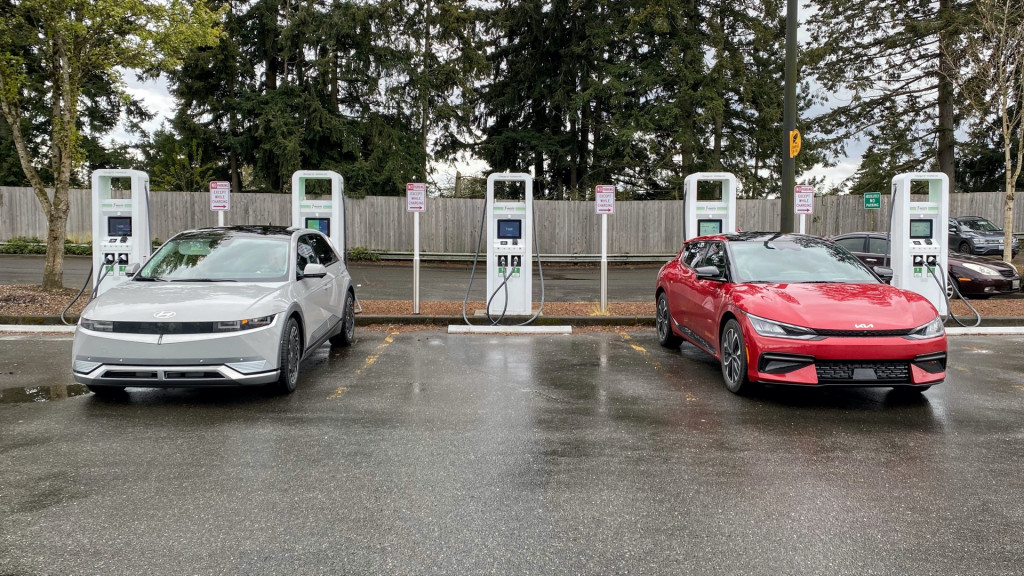
2022 Hyundai Ioniq 5 and Kia EV6 fast-charging – Lacey, WA
Most trendy DC fast-charging gear defaults to higher-voltage charging when the automobile permits it, as a result of it means you may ship the identical cost energy with much less present—and fewer resistance and warmth, bringing a hands-on advantage of thinner, lighter connectors or cables for the ability delivered.
Typically although, any automobiles and chargers able to this benefit from it by as an alternative upping the cost energy and shortening the cost time. Finally the cells cost on the identical voltage it doesn’t matter what, so it’s all concerning the pack structure and what’s executed with {the electrical} present.
This benefit may additionally get a bit muddled within the rush towards the Tesla North American Charging Normal (NACS) port, and I’ll clarify why. However first, there’s some confusion to clear up.
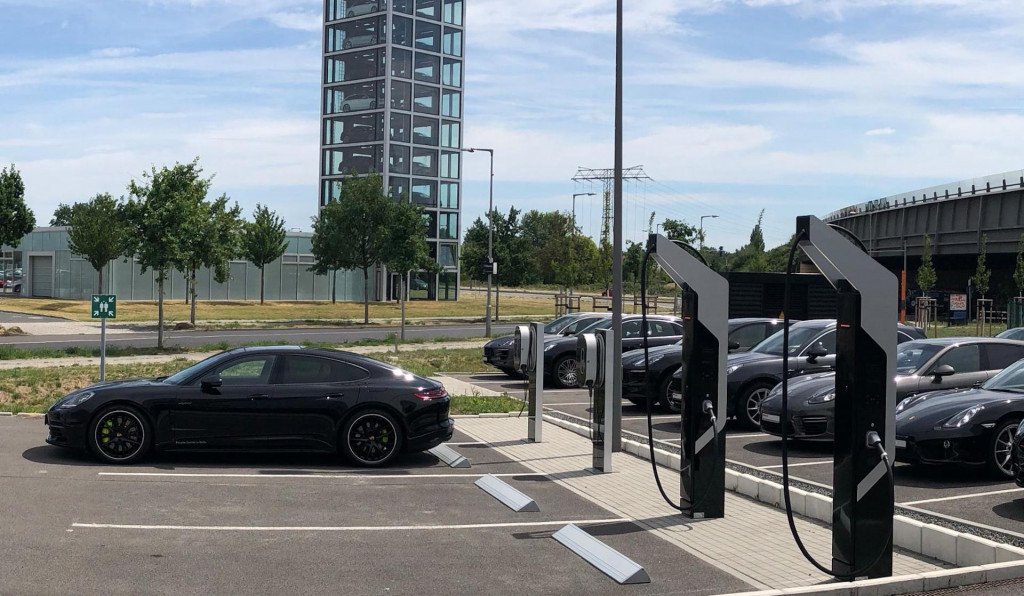
Porsche 800-volt charging stations put in at supplier
The place the 800V confusion begins
800-volt charging is to not be confused with 800-volt automobile architectures—allowing motors, inverters, and different core parts to run at increased voltage. That gives a unique set of effectivity, efficiency, and weight-saving benefits, particularly in tandem with high-voltage charging.
Though an 800-volt structure helps maximize all these advantages, it isn’t essential to reap what issues probably the most proper now to quite a few EV consumers taking a look at road-trip viability—and the way rapidly they may get electrons into place within the battery pack’s cells.
GM’s GMC Hummer EV, as an illustration, runs at 400 volts, and every layer of its dual-layer battery pack operates in some methods as a person pack. In 400-volt charging, the packs are related in parallel, however for 800-volt charging a swap permits them to be related in collection—just like the cells in an extended, multi-cell flashlight—to benefit from the upper voltage.
That 800-volt “trick” permits the Hummer EV pickup, with its 205-kwh battery pack, to cost at 350 kw and achieve almost 100 miles of vary in 10 minutes—regardless of its 400-volt system and its inefficiency in comparison with different EVs. And the massive double-decker packs within the Chevy Silverado EV and GMC Sierra EV will cost the identical means.
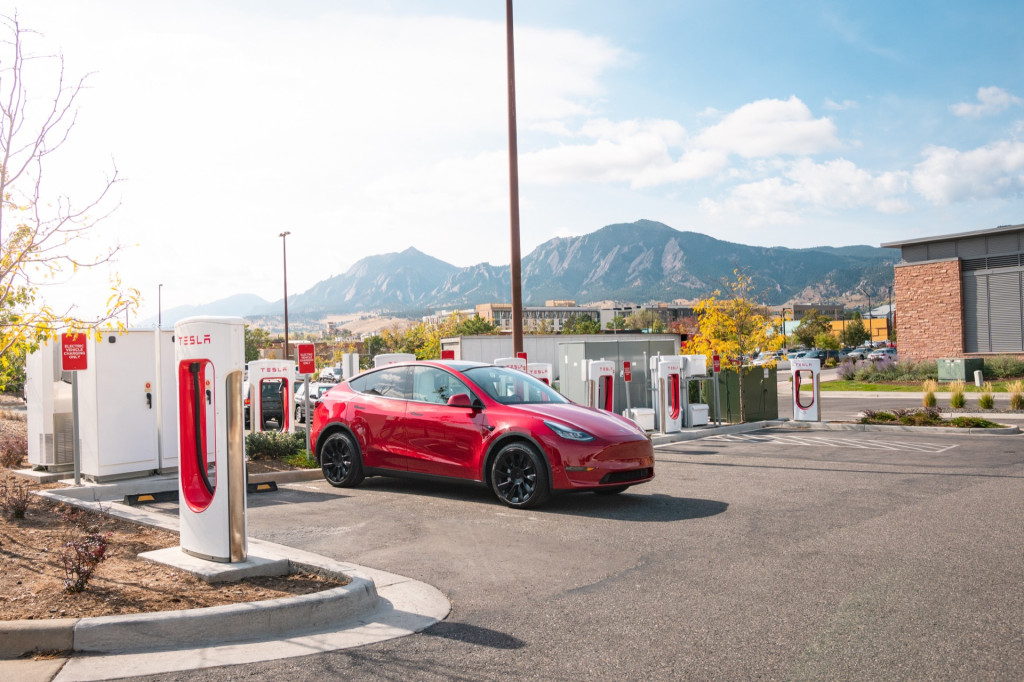
Tesla Supercharger
Why 800V issues extra now than it did earlier this yr
In current weeks varied automakers, most lately Mercedes-Benz, have stepped as much as embrace Tesla’s NACS port. In its current V3 iteration, Tesla Supercharging tops out at 500 volts, and with the V4 {hardware} that the Tesla Cybertruck will benefit from, Tesla will supply 1,000-volt functionality, with a most energy of 615 kw—and finally 1,000 kw.
The Mixed Charging System (CCS) is the port that, at current, comes on almost all U.S.-market, non-Tesla EVs. It will probably ship 350 amps of cost present at a voltage of as much as 1000 volts—amounting to a typical most output of 350 kw. 400-kw CCS {hardware} is being made, and 700-kw {hardware} has been demonstrated.
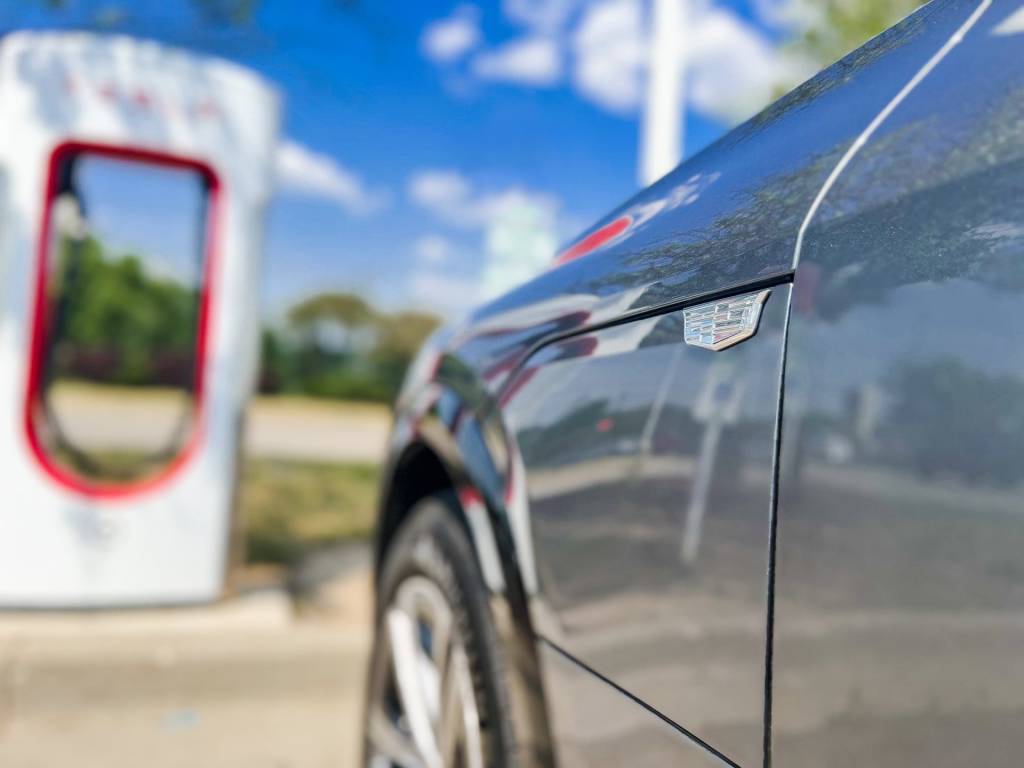
GM EVs get Tesla Supercharger entry in 2024
NACS stays a proprietary interface, however SAE Worldwide is working to make NACS a typical forward of {industry} adoption. At the moment Tesla fashions cost as much as 480 volts, making a peak energy round 250 kw possible. With an adapter, most 400-volt EVs would be capable of cost on the Supercharger community at basically the identical charges that they see on CCS chargers.
Adapter {hardware} isn’t right here but; and even when it’s, with higher-voltage charging, it will likely be new territory to design a CCS plug adapter in order that fashions just like the GMC Hummer EV may ever see 800-volt charging on the energy ranges that clients would anticipate.
That’s why no automaker up to now has mentioned they’ll begin placing the Tesla port on EVs earlier than 2025. In a big-picture sense, it hinges on Tesla with the ability to get that next-generation {hardware} (together with the adapters) out. Tesla doesn’t but have a passenger automobile or private truck that takes benefit of higher-voltage DC fast-charging. Likewise, despite the fact that BMW, Ford, Mercedes-Benz, Nissan, Rivian, Volkswagen, and Volvo have all provided a number of EVs, none of them as of but have taken benefit of 800-volt or increased charging.
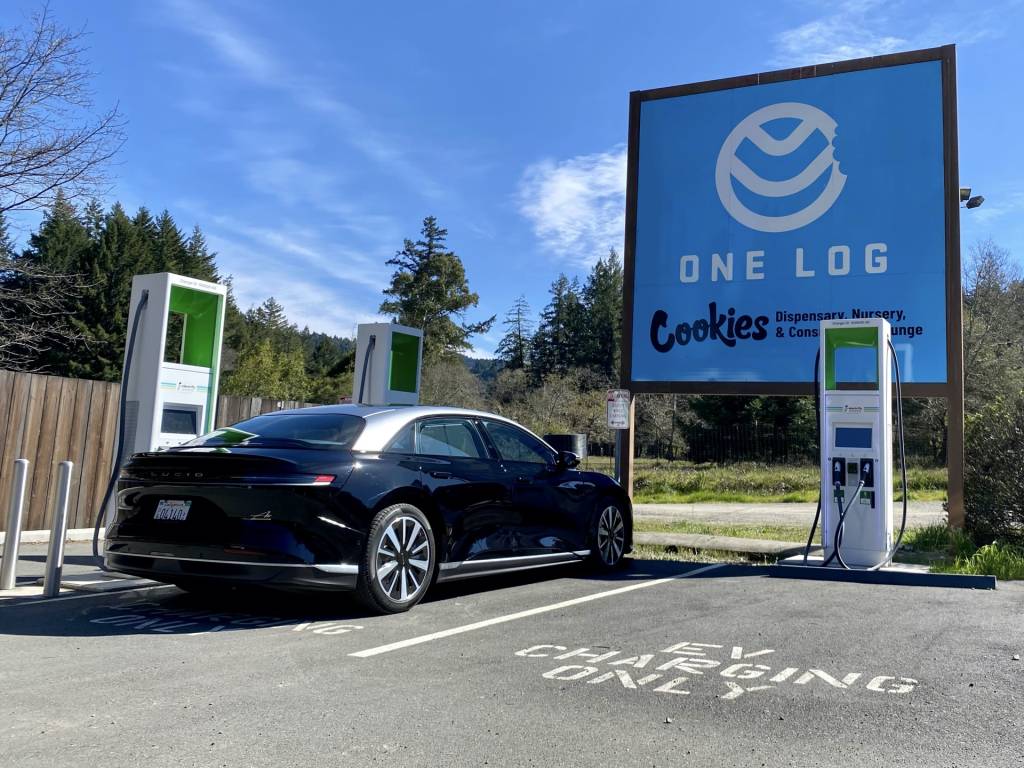
2022 Lucid Air fast-charging in Garberville, CA
Hyundai, Kia, and Porsche have probably the most 800-volt-charging succesful automobiles within the U.S.—a easy rationalization for why none of them have rushed to embrace NACS. Neither has Lucid, which is determined by it to see its industry-leading cost instances.
For that purpose, GM made a very daring choice and its huge electrical vehicles will likely be one of many first take a look at instances for whether or not NACS can ship what’s wanted rapidly sufficient.
EVs with 800V charging
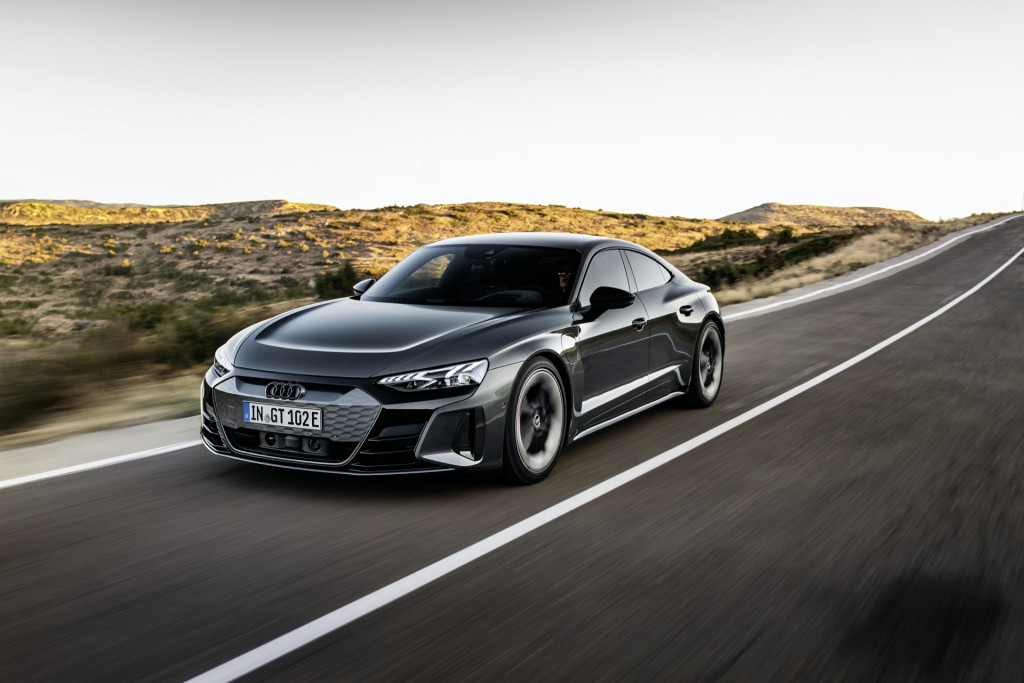
2022 Audi E-Tron GT
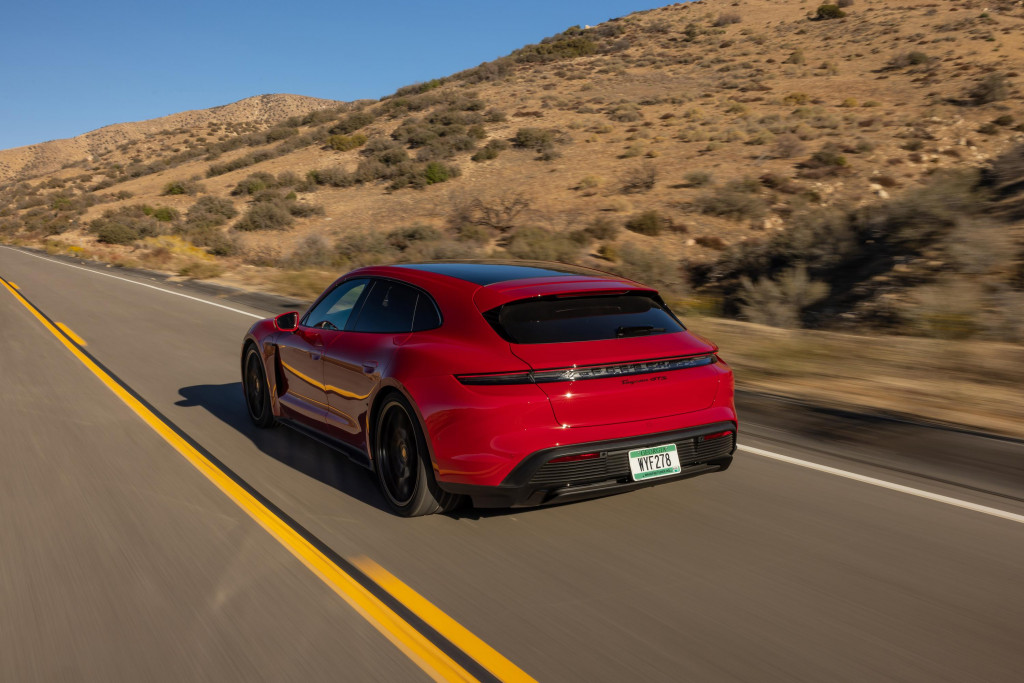
2022 Porsche Taycan GTS Sport Turismo
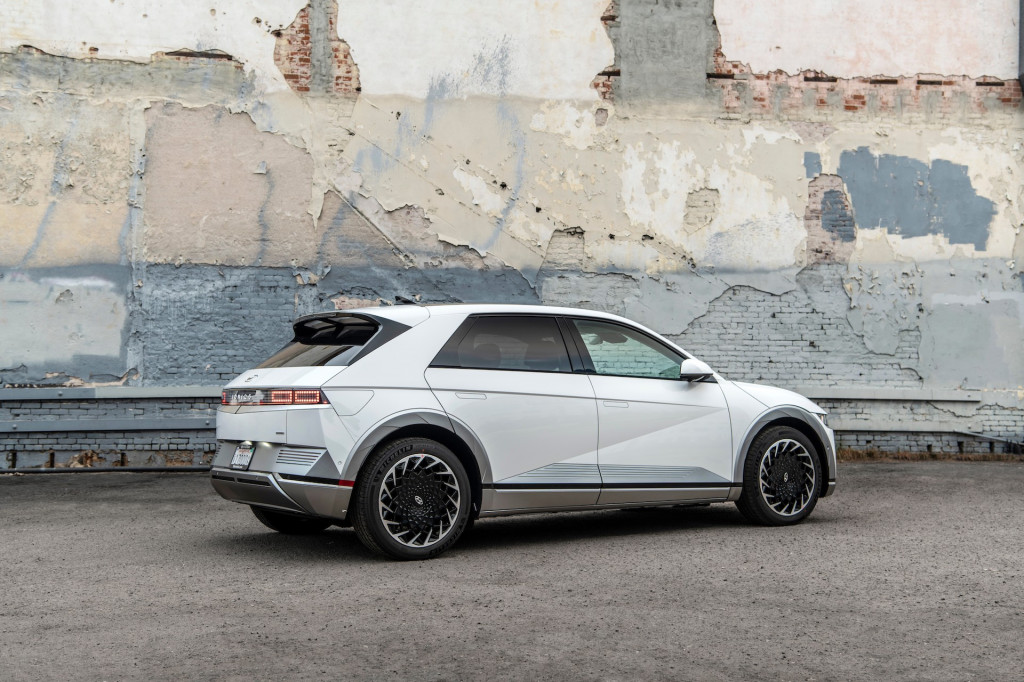
2023 Hyundai Ioniq 5
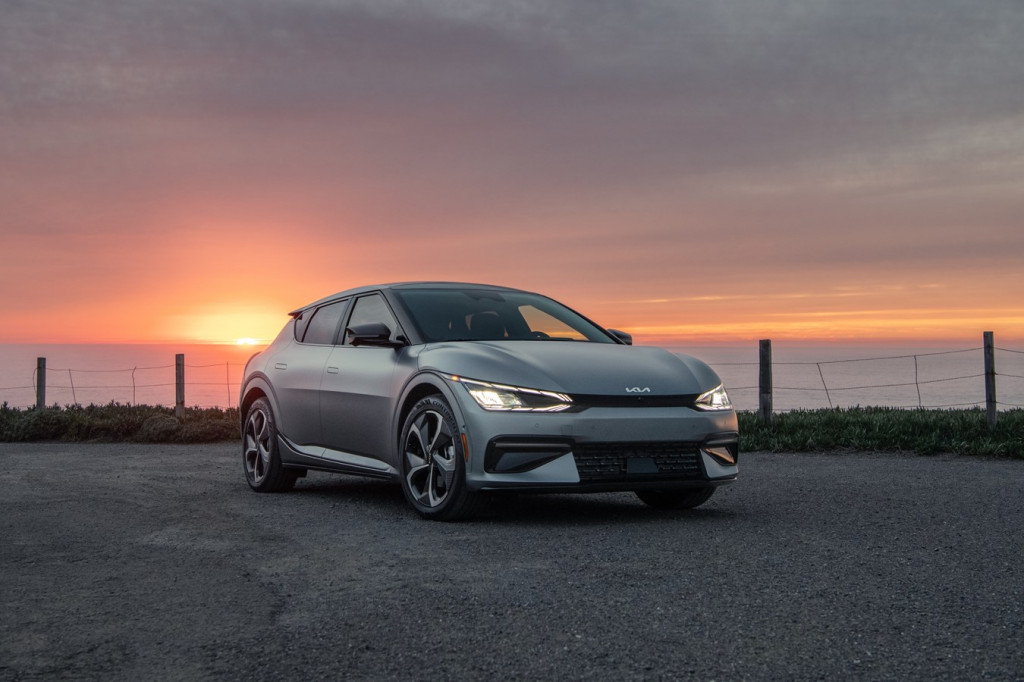
2022 Kia EV6
Right here’s the fairly restricted checklist of EVs that, immediately, can exploit fast-charging at 800 volts or increased for the shortest road-trip charging stops, together with their official automaker estimates:
Audi E-Tron GT
DC fast-charging time: 5-80% in 22.4 minutes
Peak energy: 270 kw
GMC Hummer EV
DC fast-charging time: 100 miles in 10 minutes, or 10-80% in lower than an hour
Peak energy: 350 kw
Hyundai Ioniq 5
DC fast-charging time: 10-80% in 18 minutes
Peak energy: 235 kw
Hyundai Ioniq 6
DC fast-charging time: 10-80% in 18 minutes
Peak energy: 235 kw
Kia EV6
DC fast-charging time: 10-80% in 18 minutes
Peak energy: 235 kw
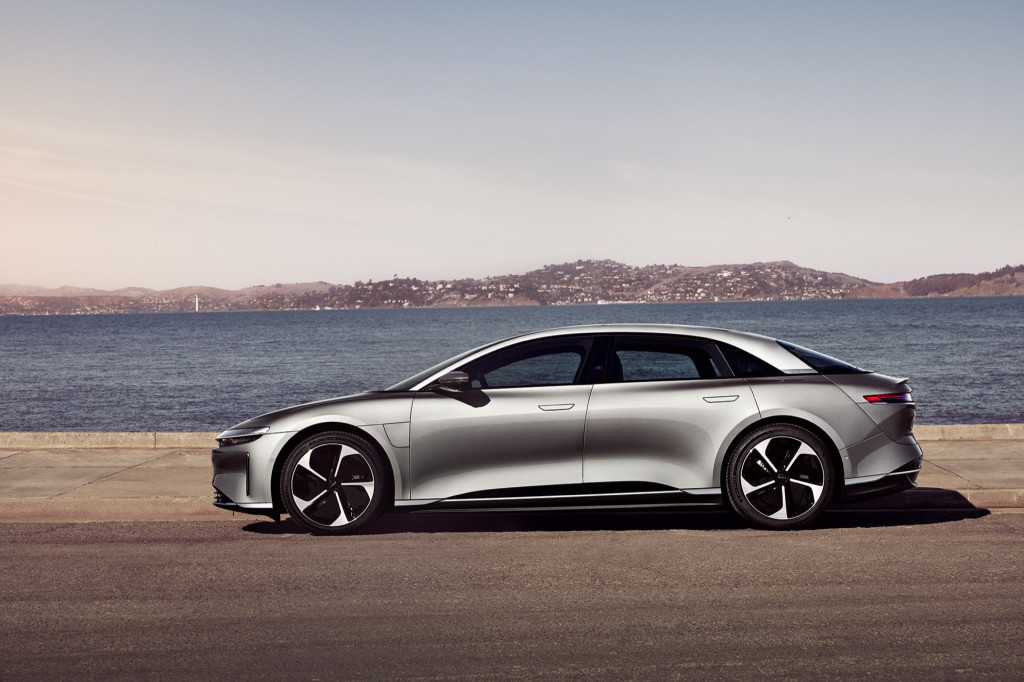
2023 Lucid Air Touring
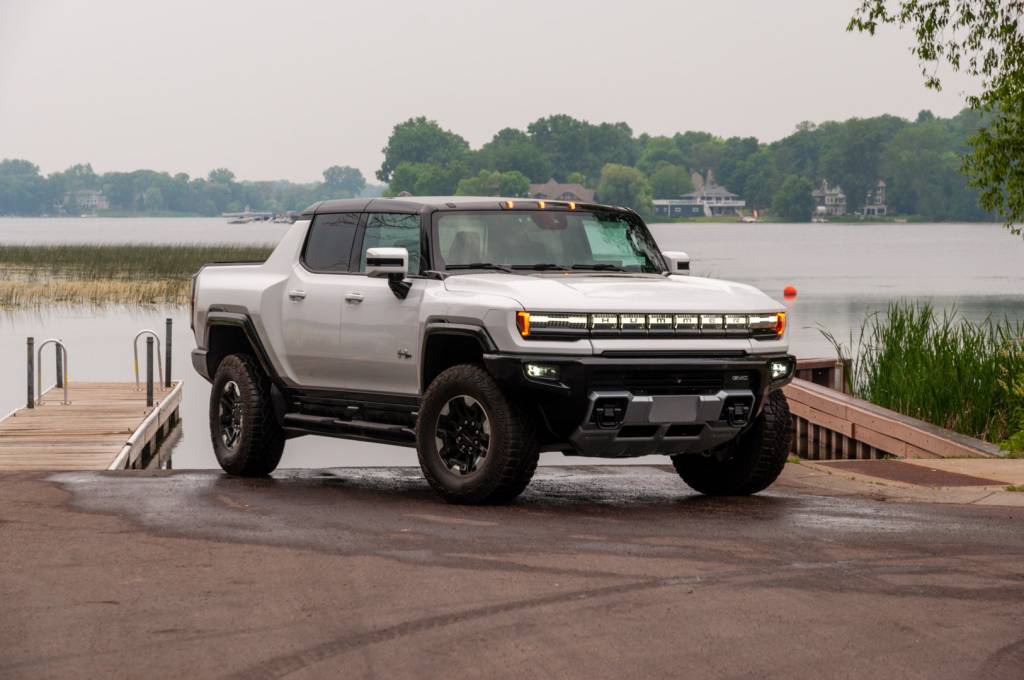
GMC Hummer EV
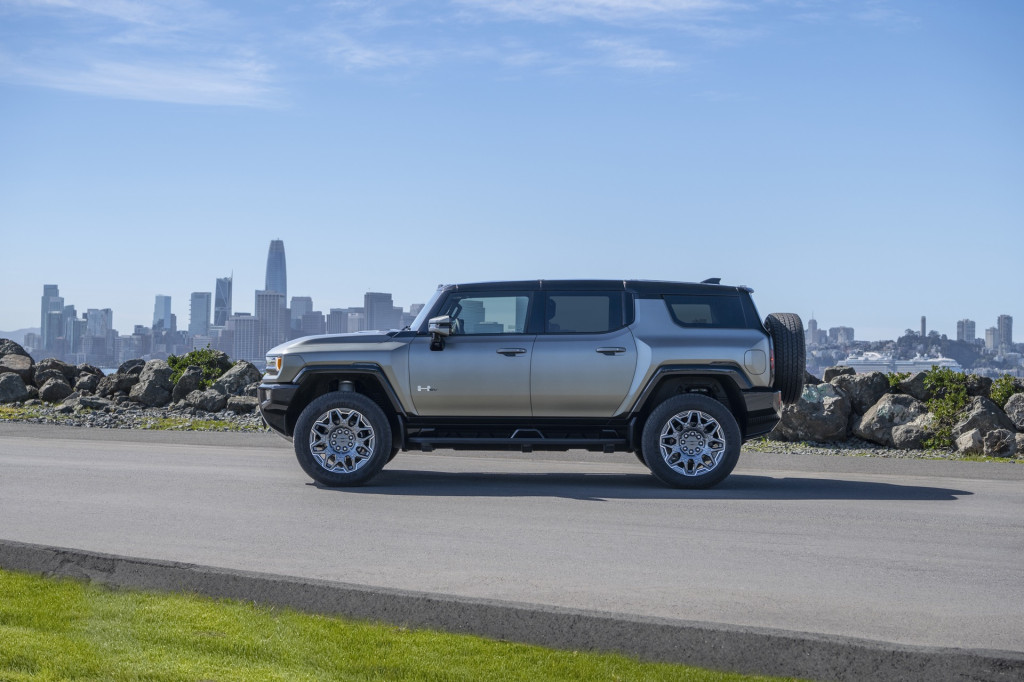
2024 GMC Hummer EV SUV
Lucid Air
DC fast-charging time: 300 miles in 20 minutes
Peak energy: Greater than 300 kw
Porsche Taycan
DC fast-charging time: 5-80% in 22.5 minutes
Peak energy: 270 kw
Some future EVs with 800V charging
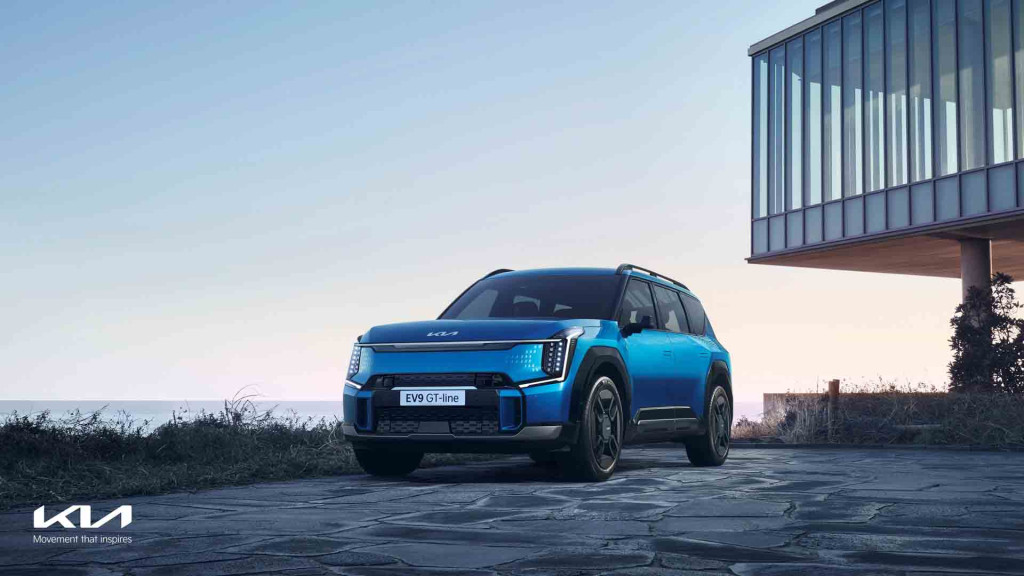
2024 Kia EV9
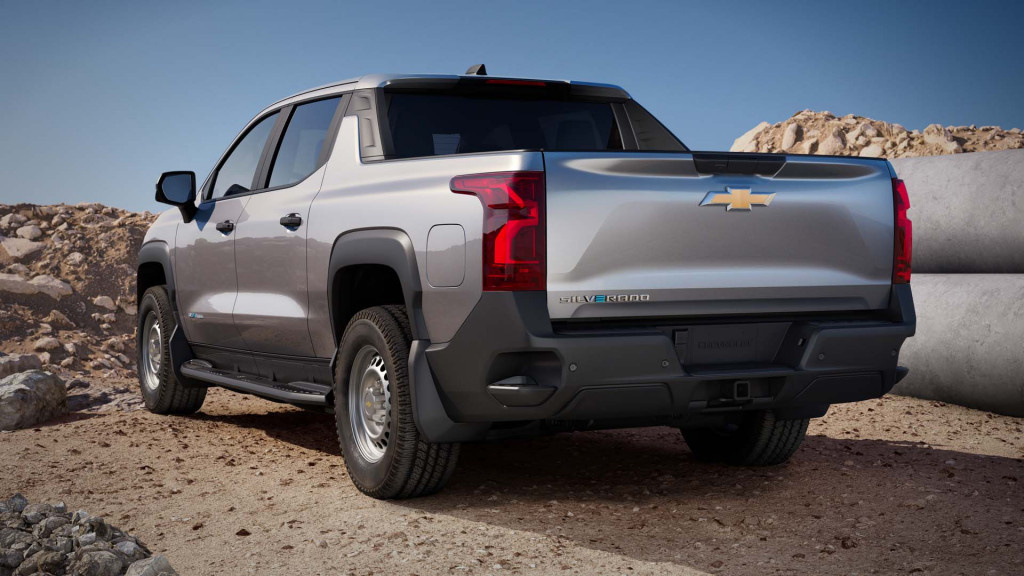
2024 Chevrolet Silverado EV
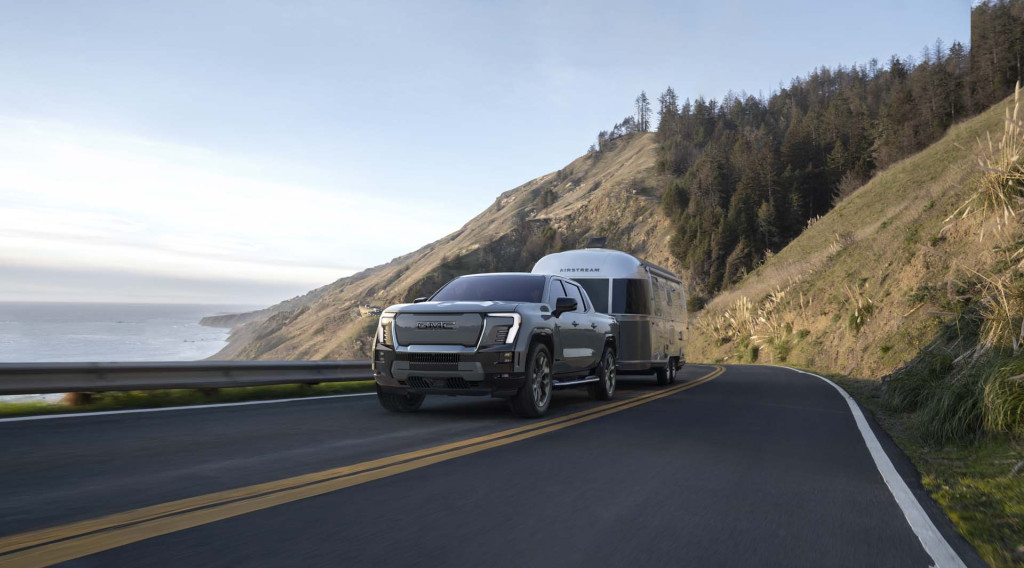
2024 GMC Sierra EV Denali Version 1
And listed below are the EVs anticipated to reach for the 2024 mannequin yr with charging at 800V or increased:
Chevrolet Silverado EV
GMC Sierra EV
Kia EV9
Lucid Gravity
Tesla Cybertruck
[ad_2]